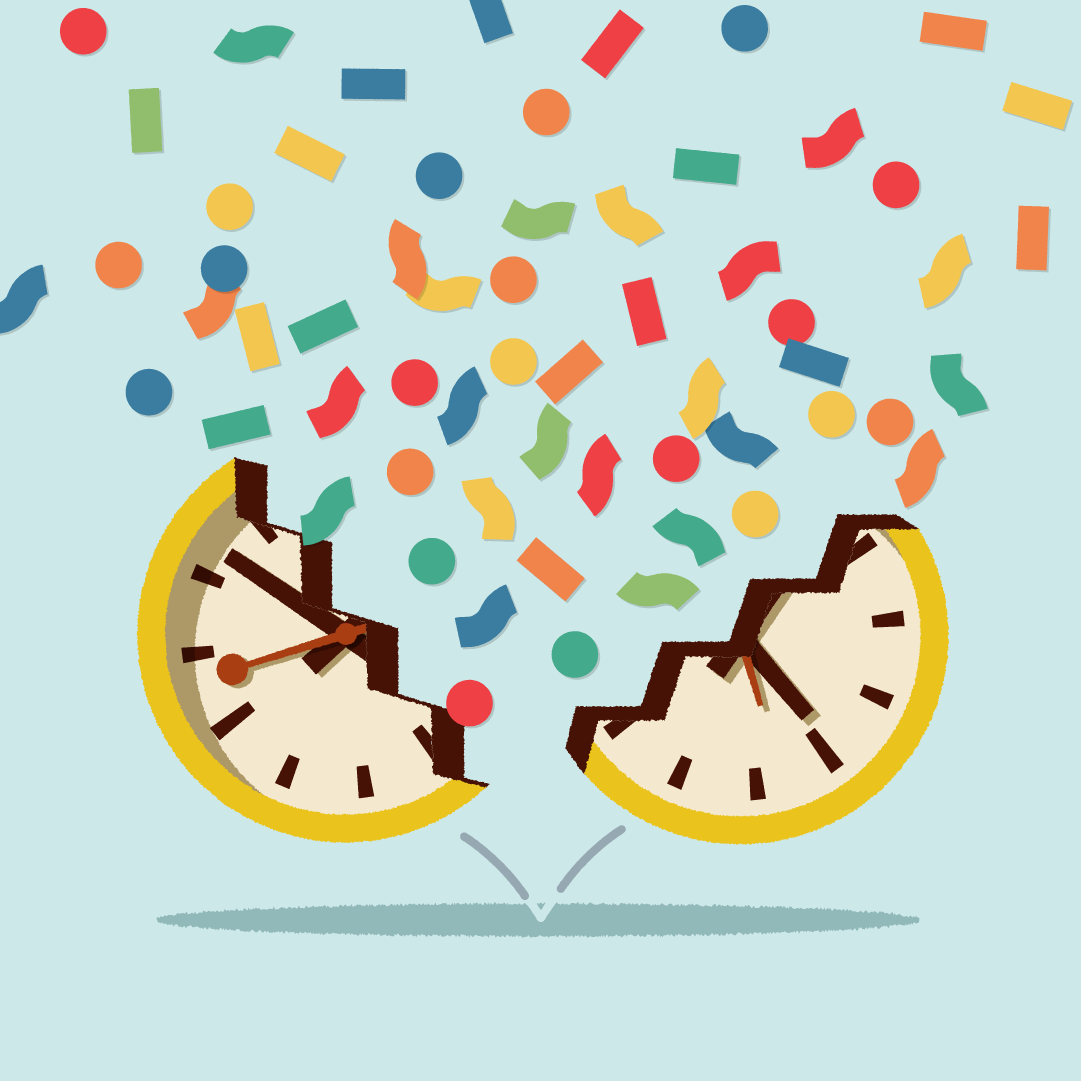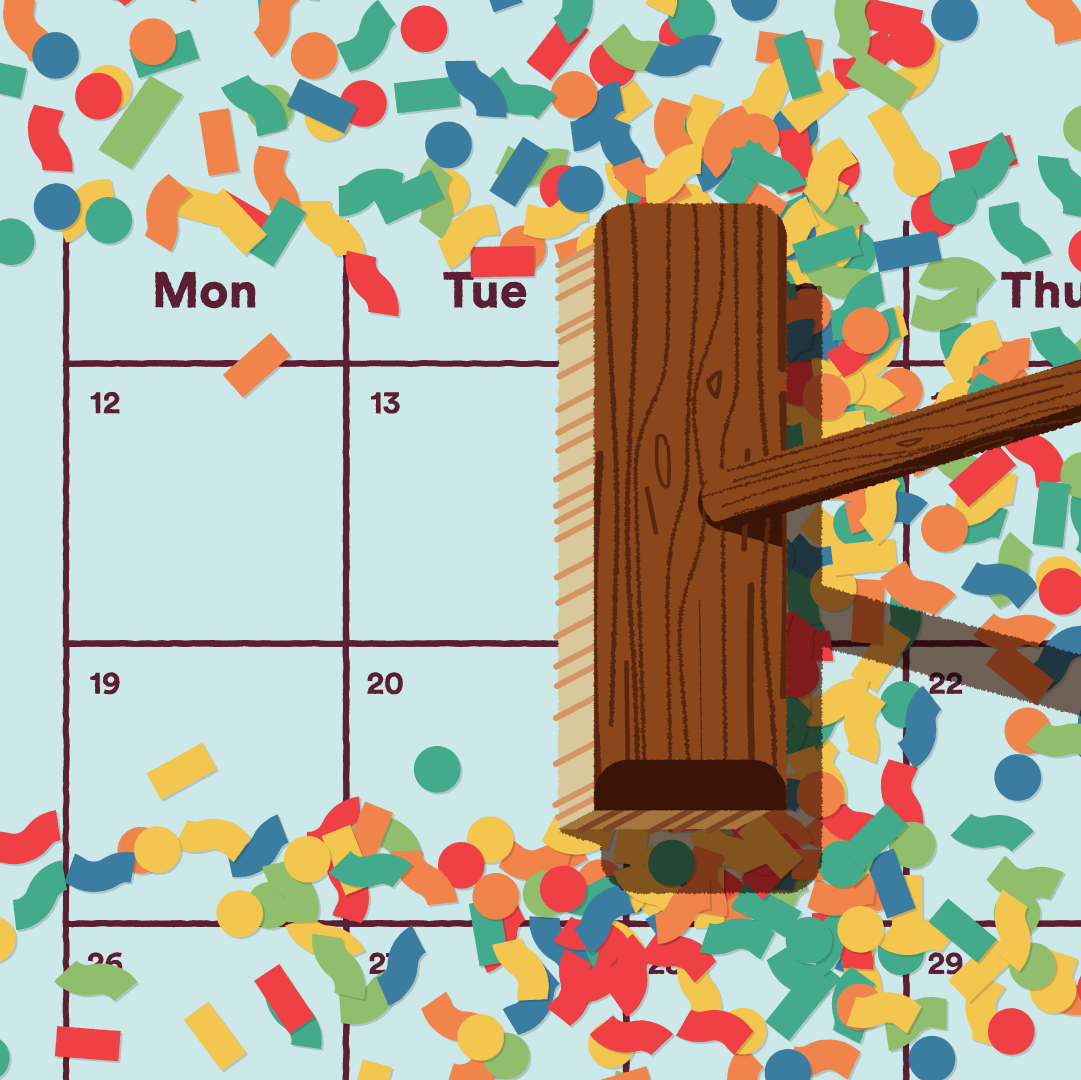Why You Should Clean Up Confetti

Pop! Small pieces fly all over the place. What a great way to celebrate right? But not all confetti is created equal, and not all is a celebration. What am I talking about? Well, have you heard of time confetti?
Time confetti is a phrase coined by author Brigid Schulte that describes how our days have become chopped up into small pieces, with our attention scattered all over the place. The time we have to focus on important tasks, which require our full attention, has become fragmented by new email alerts, social media notifications and WhatsApp message pings. All grabbing our attention and taking it away from what we’ve set out to do.
These small but frequent interruptions force you to constantly switch context, which wastes times and slows you down, as you try to remember where you were. But most importantly time confetti stops you from getting into a “flow state”.

What is a “flow state”
It may sound like something you’d expect a martial artist or spiritual guru to teach, but flow is an important topic in the study of achievement and happiness (and what better way to stay motivated than to derive a sense of joy and happiness from what you do).
Flow is a state of mind where you are completely absorbed by an activity. One that has enough interest and challenge to hold your attention, and where complexity builds as your skills and knowledge increase.
To achieve flow you need:
- A clear goal
- A way to gain immediate feedback
- A good balance between a challenge and your skills/knowledge
If what you’re working on is unclear, there’s no way of knowing what is or isn’t working, and the activity is either too frustrating or boring, you won’t be able to get into a flow state.
But there is one important thing that you need to have before you can begin to get these elements in place. Time.

Exercise - Cleaning up your time confetti
To be able to create the space you need to get into a flow state you first need to reclaim your time, and have a strategy in place to stop the fragmentation of your time. In this exercise we will focus on these modern interruptions: emails and social media notifications.
1. Select a modern distraction
Will you look at reducing the time you spend scrolling on social media, or thinking of new things to post? Or is it your emails, or personal communications that are stealing your attention away? Take some time to choose the one you will tackle first. If you’re feeling energised by this, consider choosing the one that’s taking the most of your time. If you feel like dipping your toe in before building up to tackling the more challenging distractions, select the one you feel will be easiest to tame.
2. Time box them up
Checking your emails may be distracting, but there’s also an important need to do so. The same goes for responding to your online followers or family WhatsApp group. So instead of removing them completely, decide when you will create space for these attention grabbers. Set events in your calendar throughout your day for when you’ll spend time on this activity i.e. 30 minutes to read and respond to emails in the morning, after lunch and at the end of the day.
3. Silence them
Head to the settings and turn off all notifications, sound alerts and badges (the little red dot that signifies you have a new message).
4. Claim your time for focus and flow
Now look at your calendar and find the empty spaces in your work day. Instead of leaving it blank, which makes it easier for other activities or events to find their way in, create a “meeting with yourself”. Title it with either the task you want to focus on or just call it “My focus time”.⏳Maybe add an emoji as a quick visual reminder.
5. Create your own disruptions
Set an alert/notification for this calendar event. This will disrupt the activity you’re doing, act as a reminder that this is “your time” and help to form a useful habit.
6. Use this time
It seems obvious but you will need to use this time to actually focus. Maybe put on a pair of headphones and block out your surroundings, or head to a space in your home or office away from distractions. It will take time to learn how to focus all your energy on a task and in the first few weeks you’ll find excuses not to. But keep at it. If you drift away from the practise, find your way back.
When you start to achieve a flow state you’ll see results in the amount of work you get done and how you feel about it.
Other things you could consider
- Using do not disturb mode or the airplane mode on your phone to silence all apps.
- Using an app blocker - these can be used on your phone or computer to block certain apps for a set amount of time.
- Using a timer to visualise the time you have left - helpful if you keep getting distracted and need a deadline to regain focus.
Dive deeper
There are many great books out there on the subject of managing the distractions caused by modern life and technology, from How to Break Up With Your Phone by Catherine Price to Deep Work by Cal Newport. I’d personally recommend reading Unsubscribe by Jocelyn K. Glei if you want to tame your emails, social media, and also learn ways to use email to your favour.

Adam Ellison
The founder and course mentor at The Monday Morning Club
